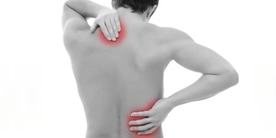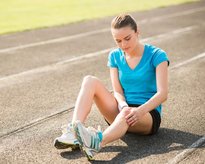 While there are many benefits of exercise or a hard practice, often times athletes may experience some discomfort. When this occurs, it is important for the athlete to be able to distinguish between soreness and pain. Perhaps you have heard the term delayed onset muscle soreness, but what does this mean? Muscular soreness is a healthy and expected response to exercise. While pain is an unhealthy and abnormal response. Experiencing pain following a hard practice or workout may be indicative of an injury. So, how Do You Tell the Difference? This chart below highlights some key differences between the two:
 Muscle Soreness If you’ve been involved in sports or activities, you may have heard the term DOMS before. This stands for Delayed Onset Muscle Soreness and is a normal response to an increase in difficulty of activity. This is the result of small, safe damage to muscle fibers, and usually peaks about 24-72 hours after activity. Movement may initially be uncomfortable, but you may find that moving and stretching gently will help decrease the soreness. During the short time period you experience muscle soreness, you may consider performing alternative exercise activities in order to give your sore muscles time to recover while continuing to strengthen other muscles.  Pain In contrast to muscle soreness, you may experience pain during or after exercise or a practice. This may be a sharp pain and likely involves your muscles or joints. This pain may linger for awhile, even after a rest period. If you find this to be the case, it could be indicative of an injury, opposed to soreness. It is important to note that pushing through a pain could lead to even further injury, so being able to recognize these symptoms is imperative. If you feel the pain is extreme or is not improving within 7-10 days or so, consider consulting a medical professional for further assessment and treatment. A good way to combat both of these side effects of exercise is to gradually increase the difficulty whenever possible. This will allow the body to adapt more slowly and decrease the risk of muscle soreness and injury.
1 Comment
2/7/2023 09:34:11 am
Thanks for sharing the article, and more importantly, your personal experience of mindfully using our emotions as data about our inner state and knowing when it’s better to de-escalate by taking a time out are great tools. Appreciate you reading and sharing your story since I can certainly relate and I think others can to
Reply
Leave a Reply. |
Archives
April 2022
Categories
All
Disclaimer: The information contained on this website is compiled from a variety of professional sources as well as the author's own experiences. The information should NOT be used in place of a visit to your healthcare provider or used to disregard any advice provided by your healthcare provider.
|

 RSS Feed
RSS Feed